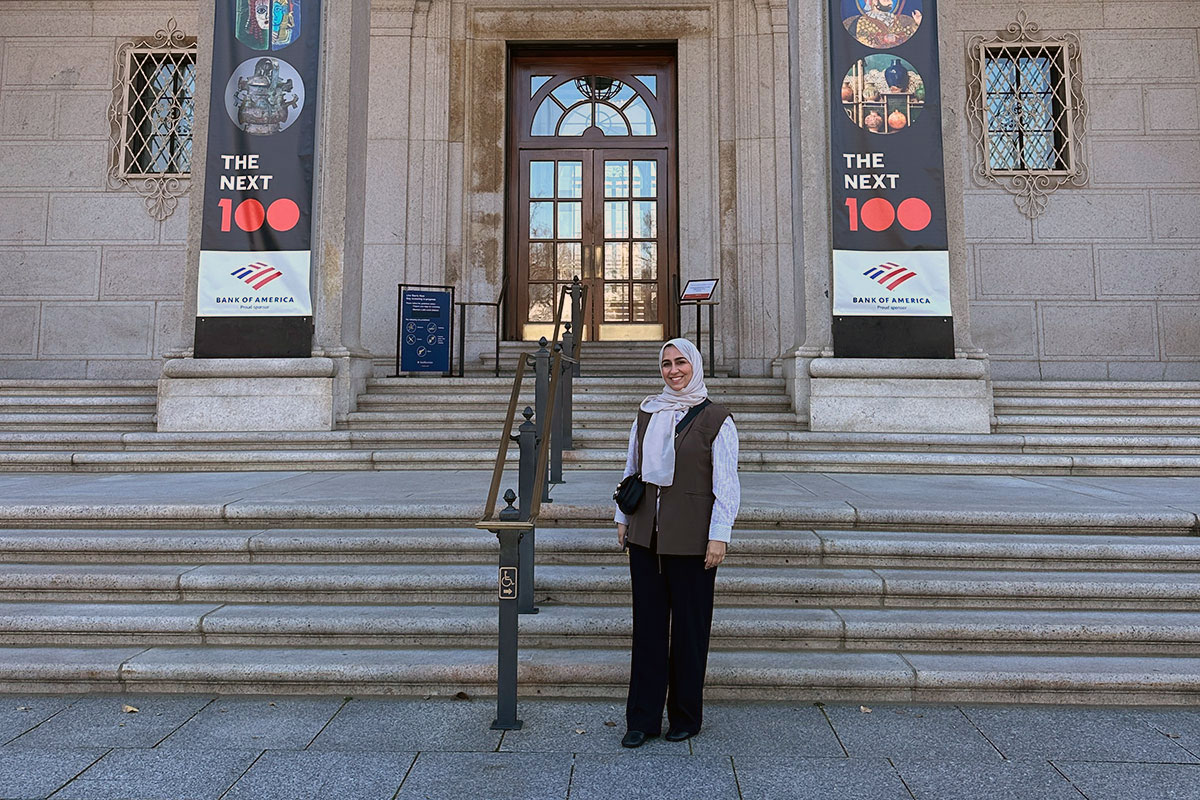In December 2023, artisan Sarah Al Hosani hosted a ceramics demonstration and a discussion in Washington, D.C., as part of the Artisan in Residence program, a collaboration between the Center for Folklife and Cultural Heritage and the National Museum of Asian Art.
Al Hosani is an Emirati ceramist and entrepreneur from Abu Dhabi, United Arab Emirates. She started practicing pottery in 2015, and in 2021 launched her studio, Khazaf for Fine Arts. While students at her studio dive into the world of wheel throwing, glazing, and more, Al Hosani’s work extends beyond technique. Khazaf for Fine Arts has become a vibrant community hub, fostering artistic connections and knowledge exchange among aspiring and seasoned artists alike.
“My love for art started from a young age because my mom is a painter, and I grew up seeing art,” Al Hosani said. “I used to always join her in painting. Then in university, I decided to study multimedia design. I fell in love with pottery, and then I opened a studio for the public to learn more.”
Al Hosani first brought her love of pottery and desire to share her culture to D.C. during the 2022 Smithsonian Folklife Festival. As part of the UAE program, she demonstrated her craft, participated in panel discussions, and shared her love of pottery with visitors on the National Mall. In 2023, she excitedly returned for the Artisan in Residence program in hopes of more deeply connecting with visitors at the National Museum of Asian Art.
“Most of the things that inspire me are the culture and heritage,” Al Hosani said. “I always like to connect my culture and create new contemporary minimal designs that are functional and that we use in everyday life, just like Arabic coffee cups, for example, or incense burners that we always find in the house. I am very honored as an Emirati woman to be invited to Washington, D.C. I wanted to show the world that Emirati women are very powerful and strong, and they can do so many things.”
Scroll through the slideshow to see highlights from Al Hosani’s residency.
Reflecting on her residency, Al Hosani said, “This experience will always stay in my memory as one of the best professional experiences I had in my life.”
Beth Ferraro is the artisan coordinator working with the Center for Folklife and Cultural Heritage and the National Museum of Asian Art Museum on this pilot program. She is the curator at Gallery Y at the YMCA Anthony Bowen in D.C., teaches chair yoga to seniors, and serves as an art and community consultant under the name The Art Island.
This program received federal support from the Asian Pacific American Initiatives Pool, administered by the Smithsonian Asian Pacific American Center.












